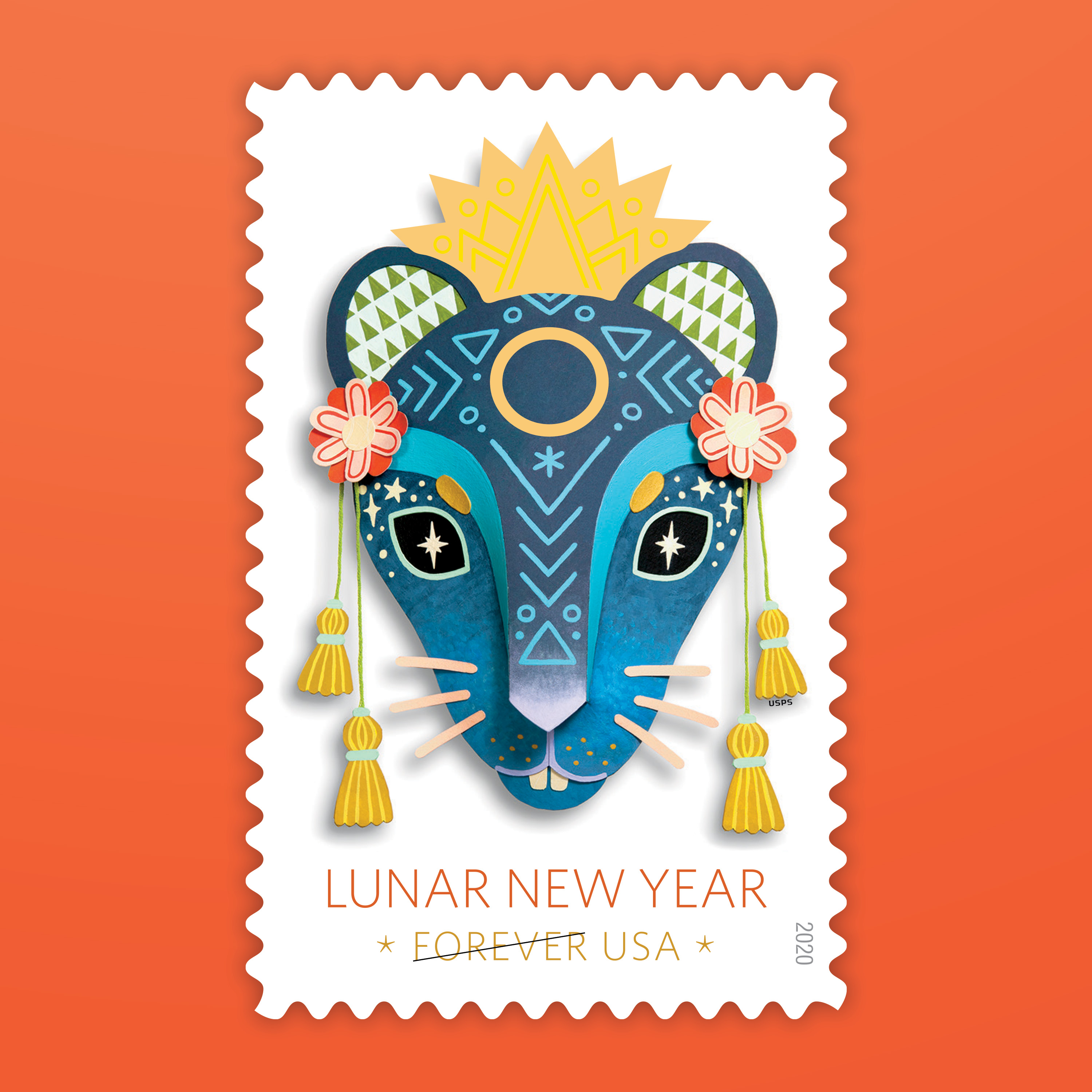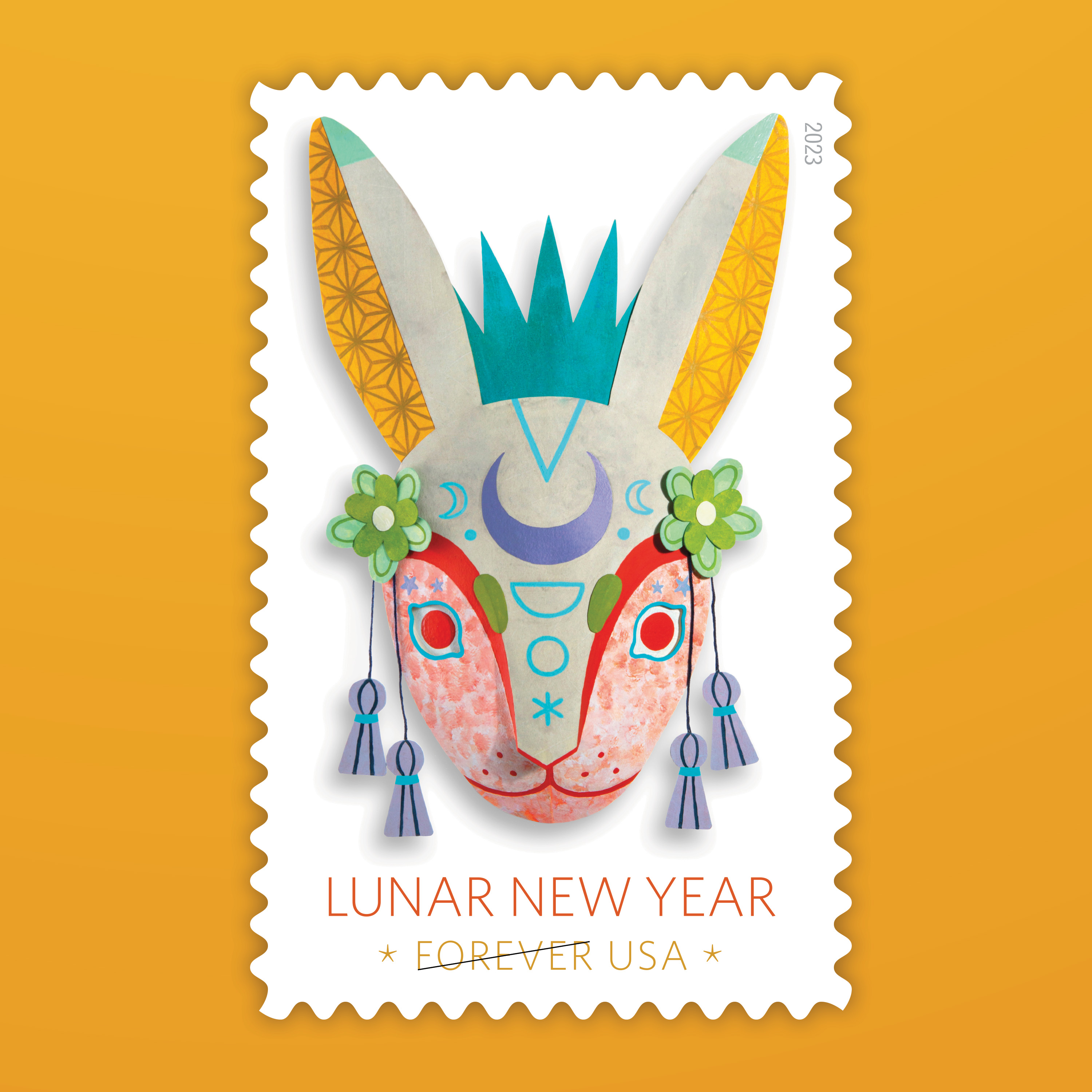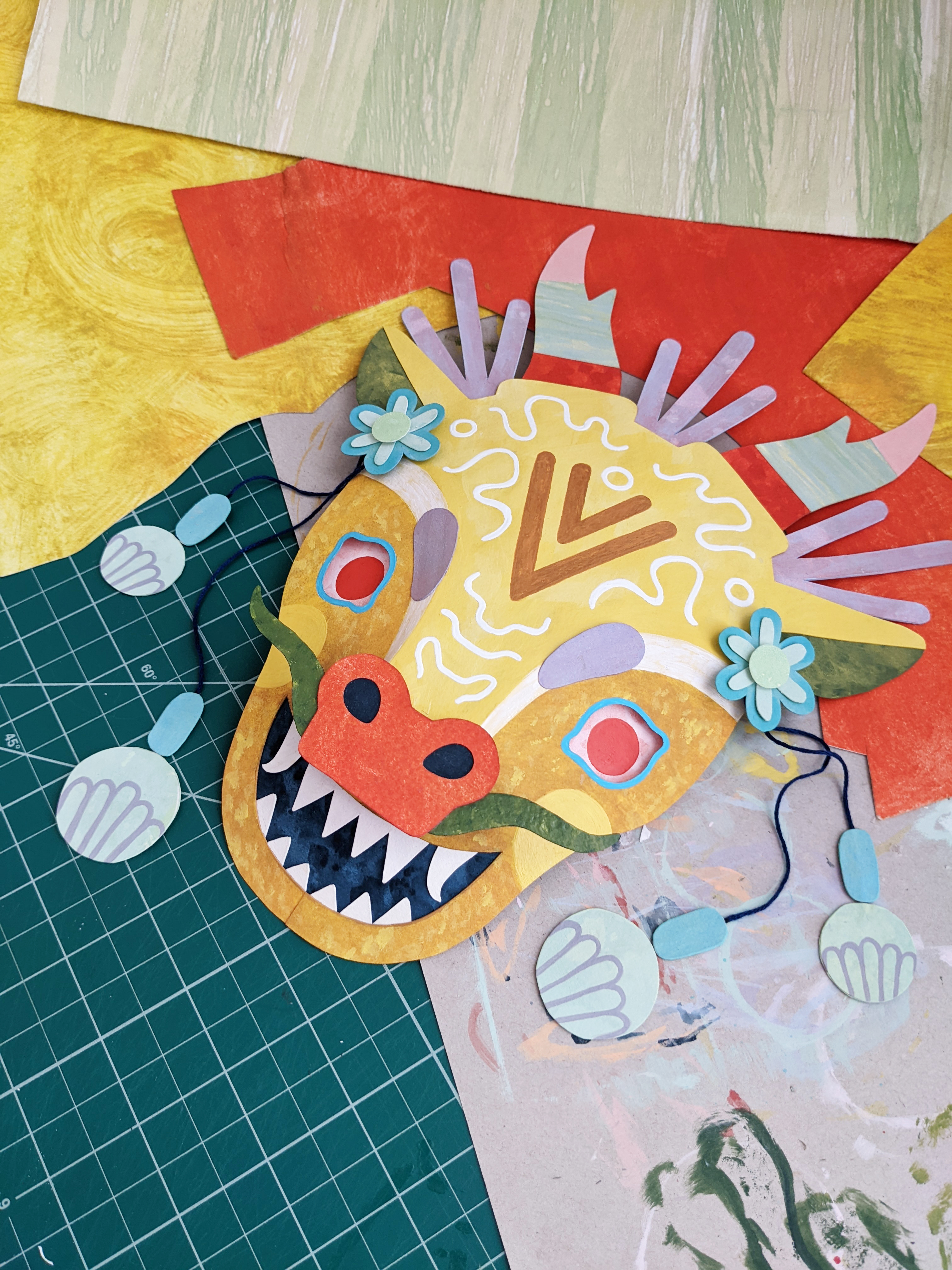
Dragon Craft
Art director Antonio Alcalá can remember the first occasion when he encountered a Lunar New Year celebration firsthand. “I was in New York City’s Chinatown when a Lunar New Year festival was taking place,” he recalls. “I was excited to see the celebration, especially the dragon going down the street and into the doorways of different businesses.” Little did he know that years later he would be asked to design a postage stamp series capturing the energy and color of that moment.
Typically, art directors design stamps to honor a subject once, for a single year, but certain topics are given a multiyear commitment. The 2024 Lunar New Year • Year of the Dragon stamp is unique in that it represents only one part of a 12-year series — the dragon stamp is the fifth in the current series.
The series itself is now in its third cycle through the 12 animals of the Chinese zodiac, making it one of the longer-running series of stamps issued by the U.S. Postal Service. The previous two editions, which ran from 1992 to 2004 and from 2008 to 2019, showcased the art of Clarence Lee and Kam Mak.

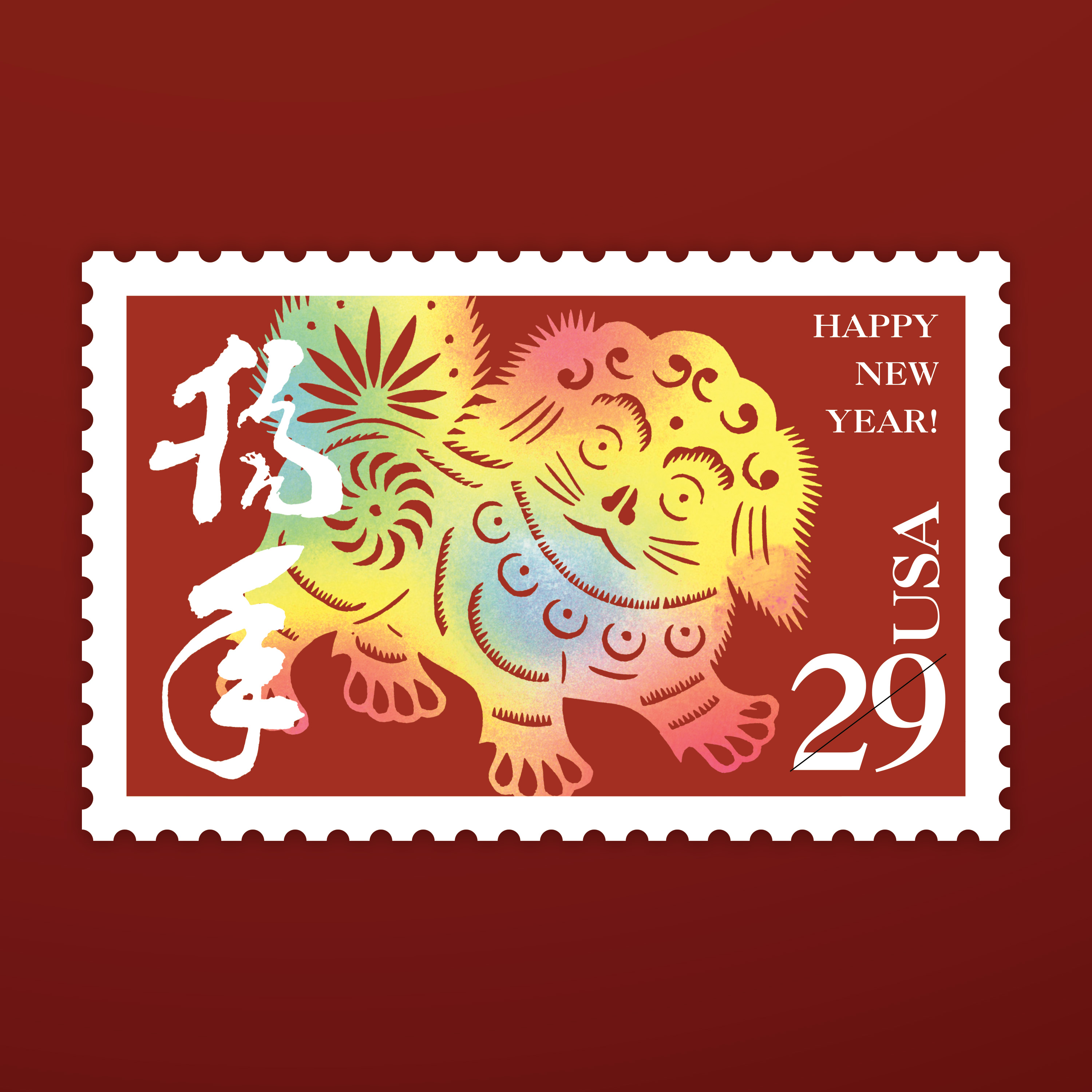
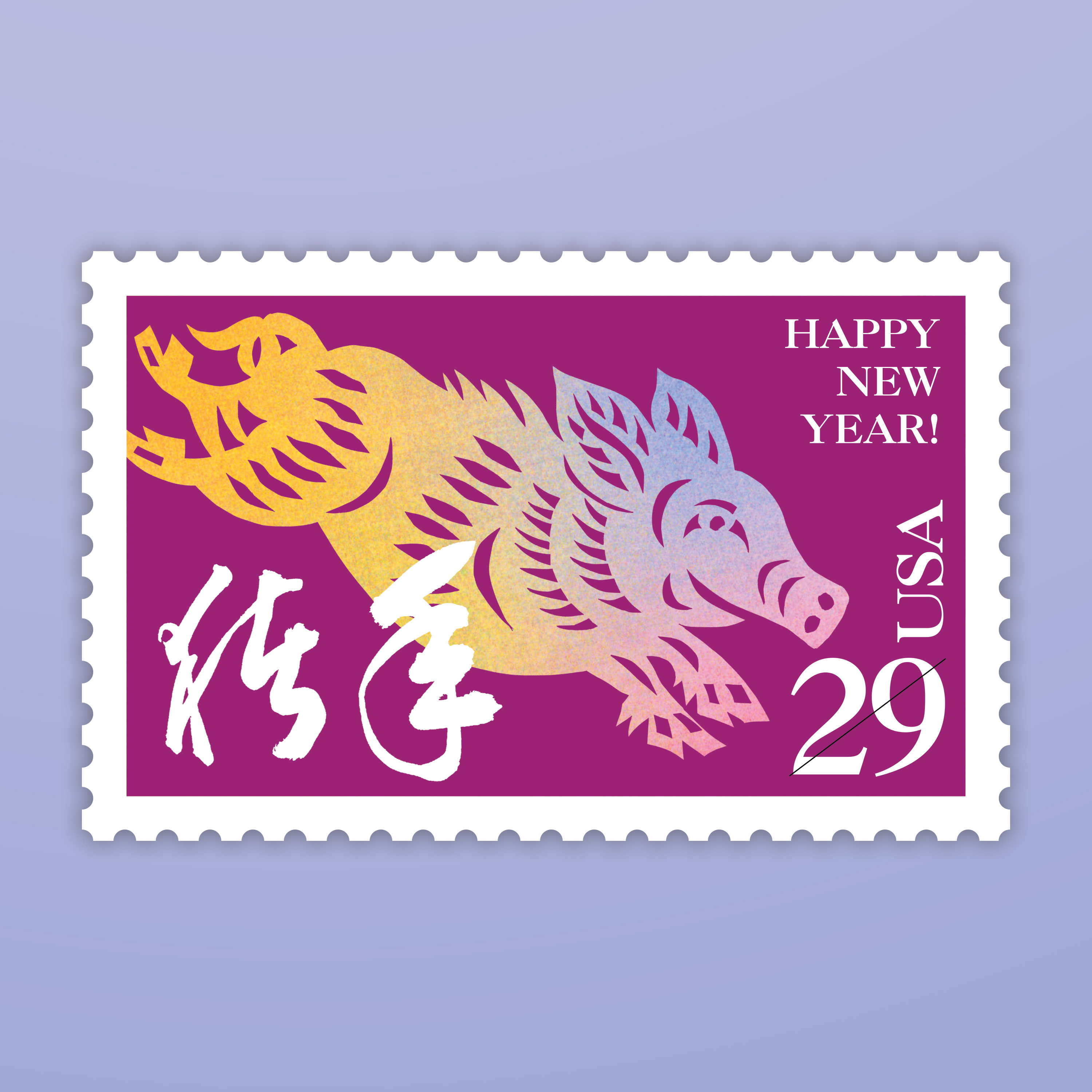

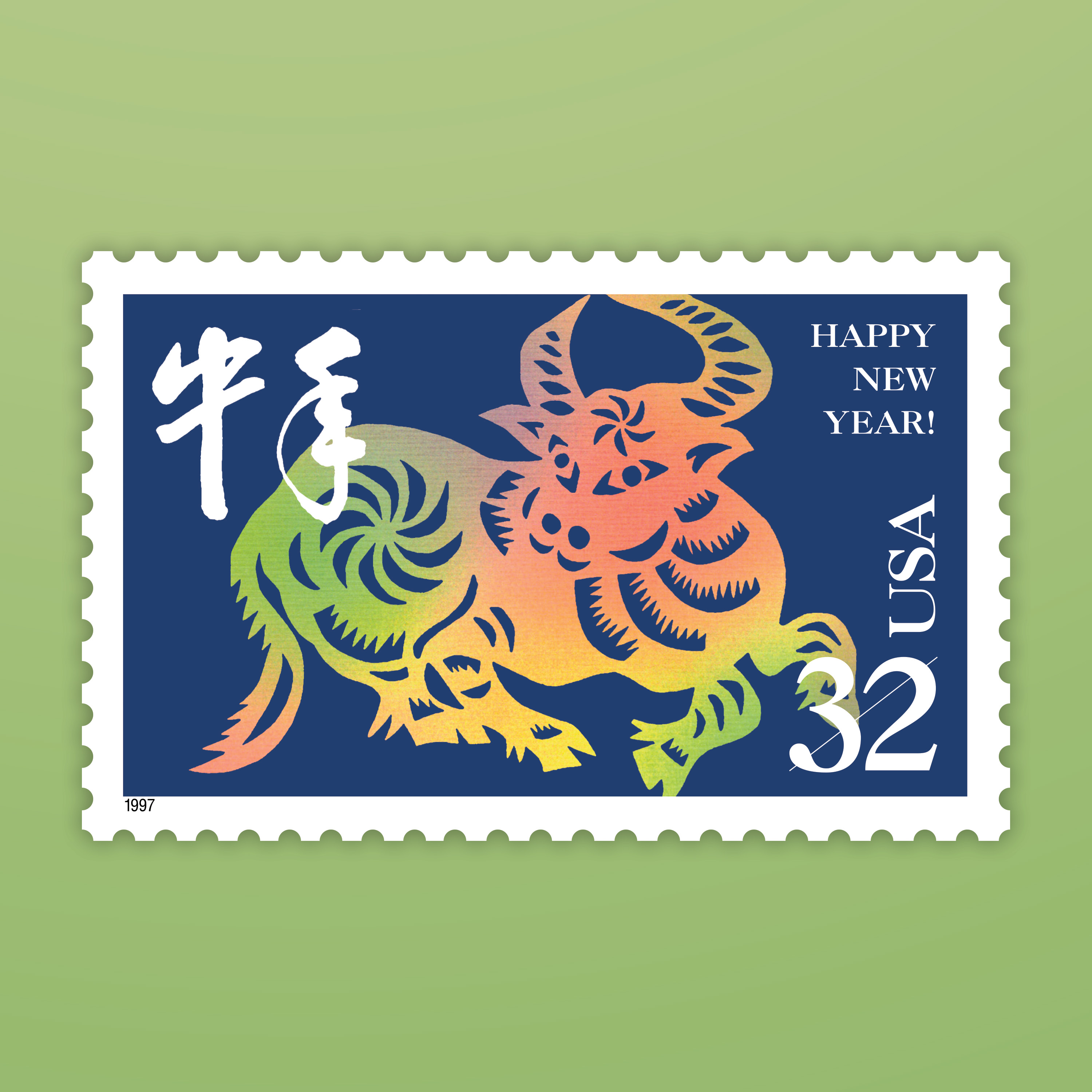
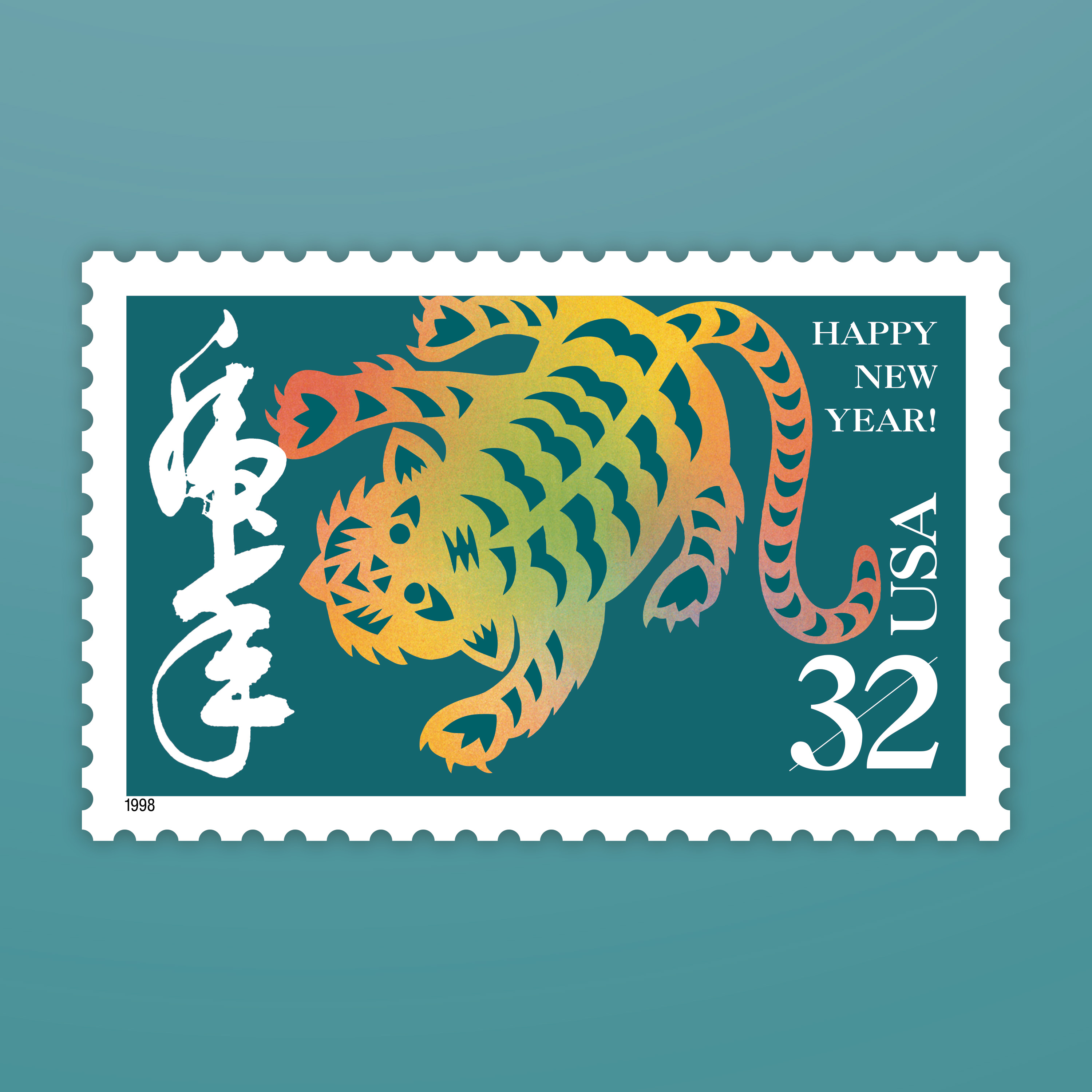

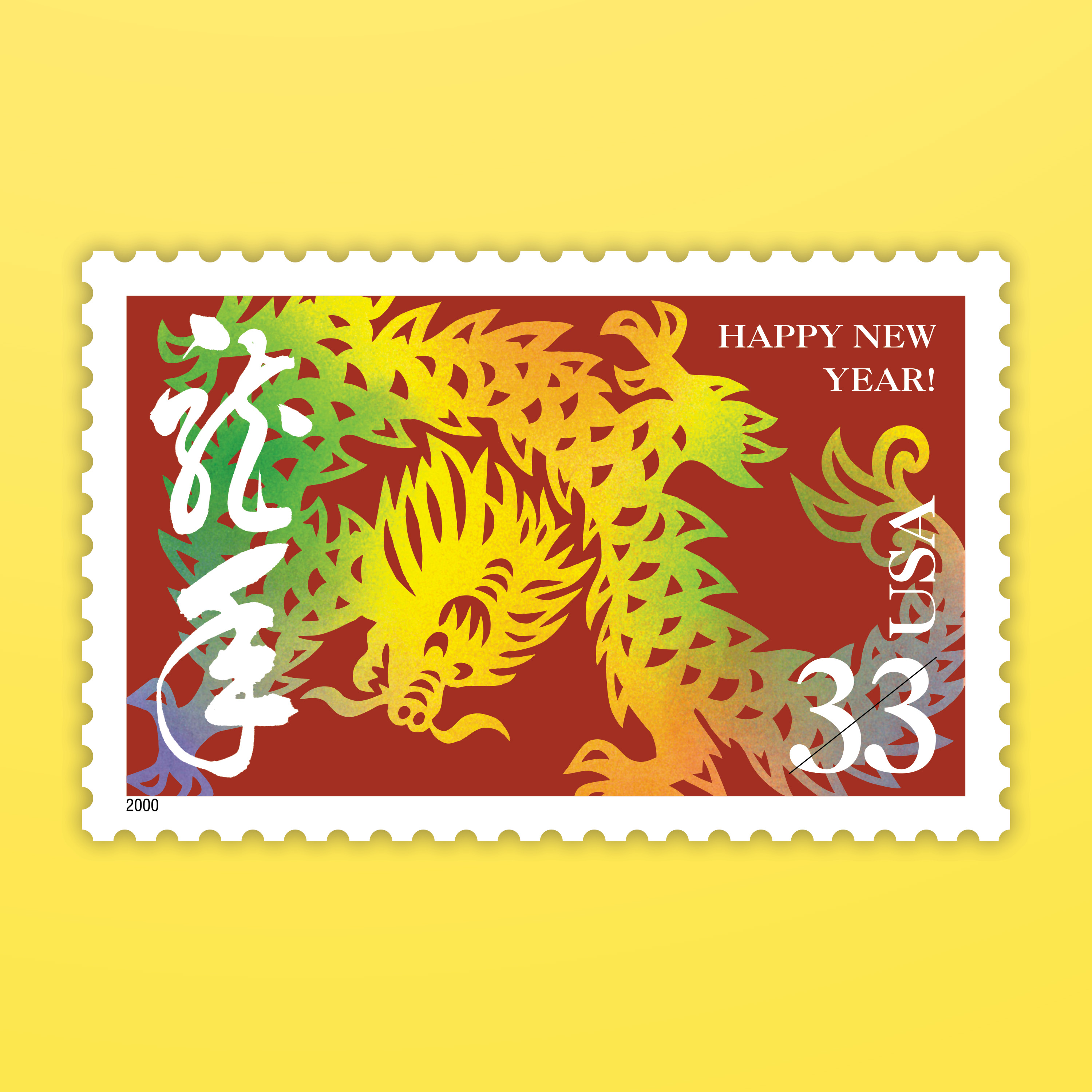
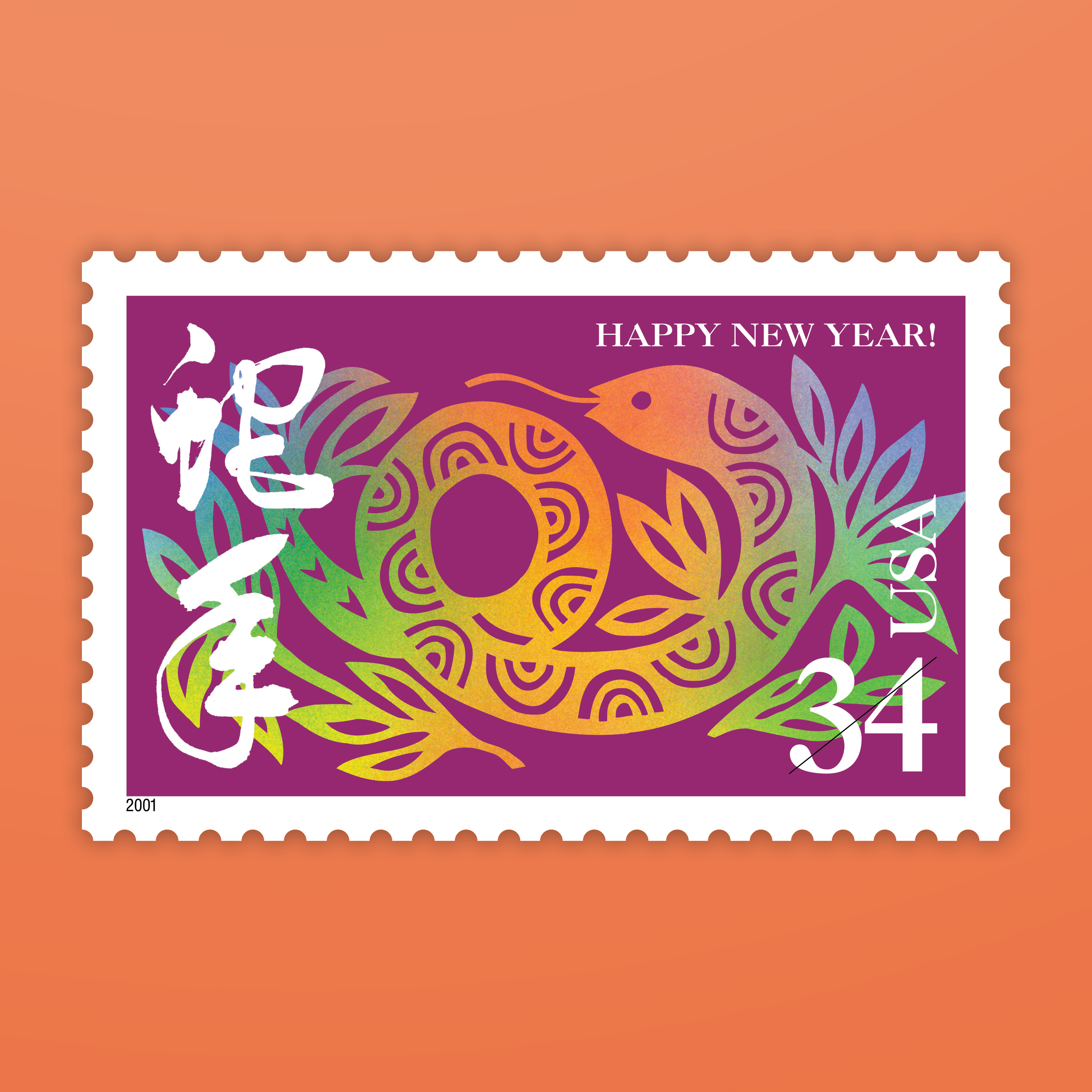
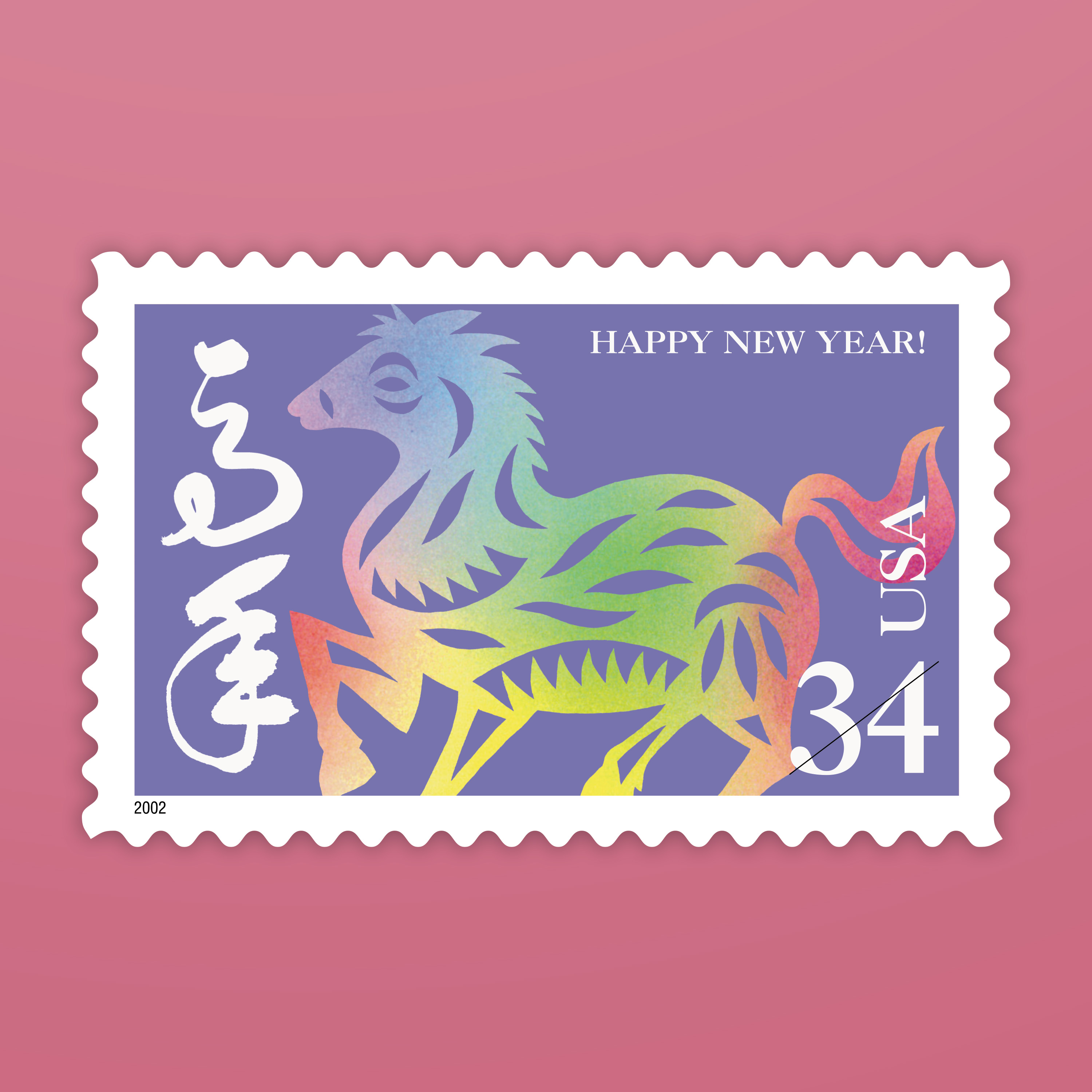
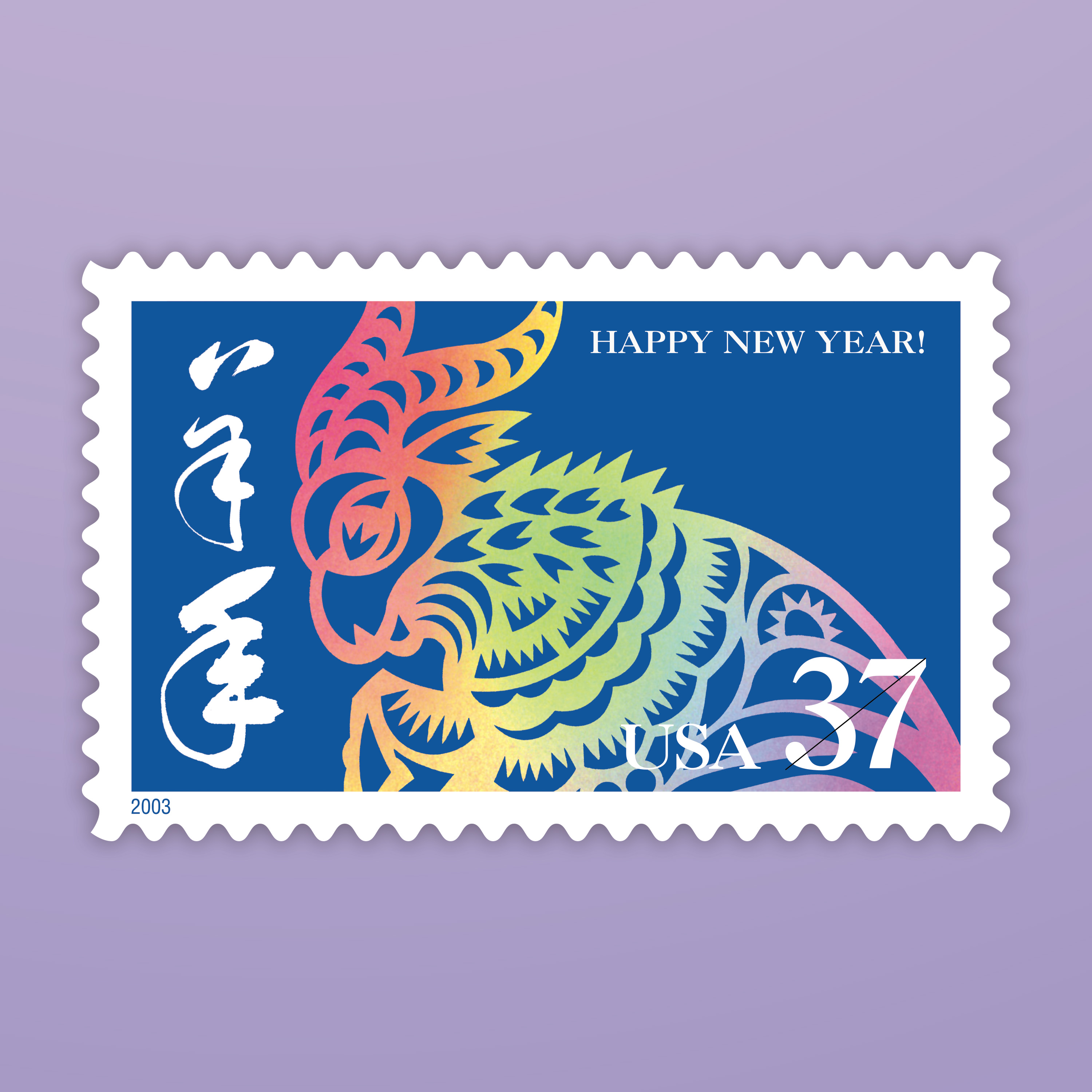
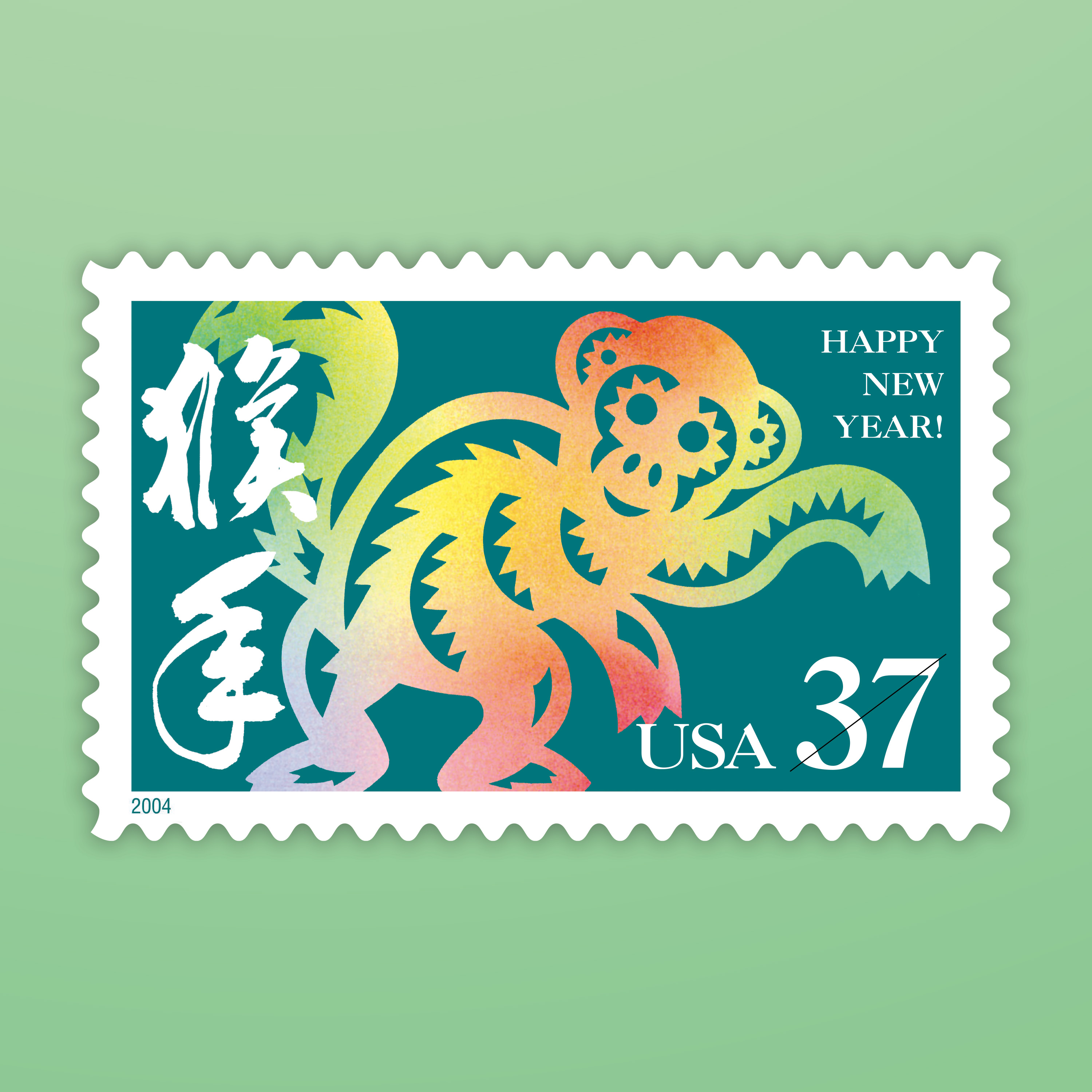


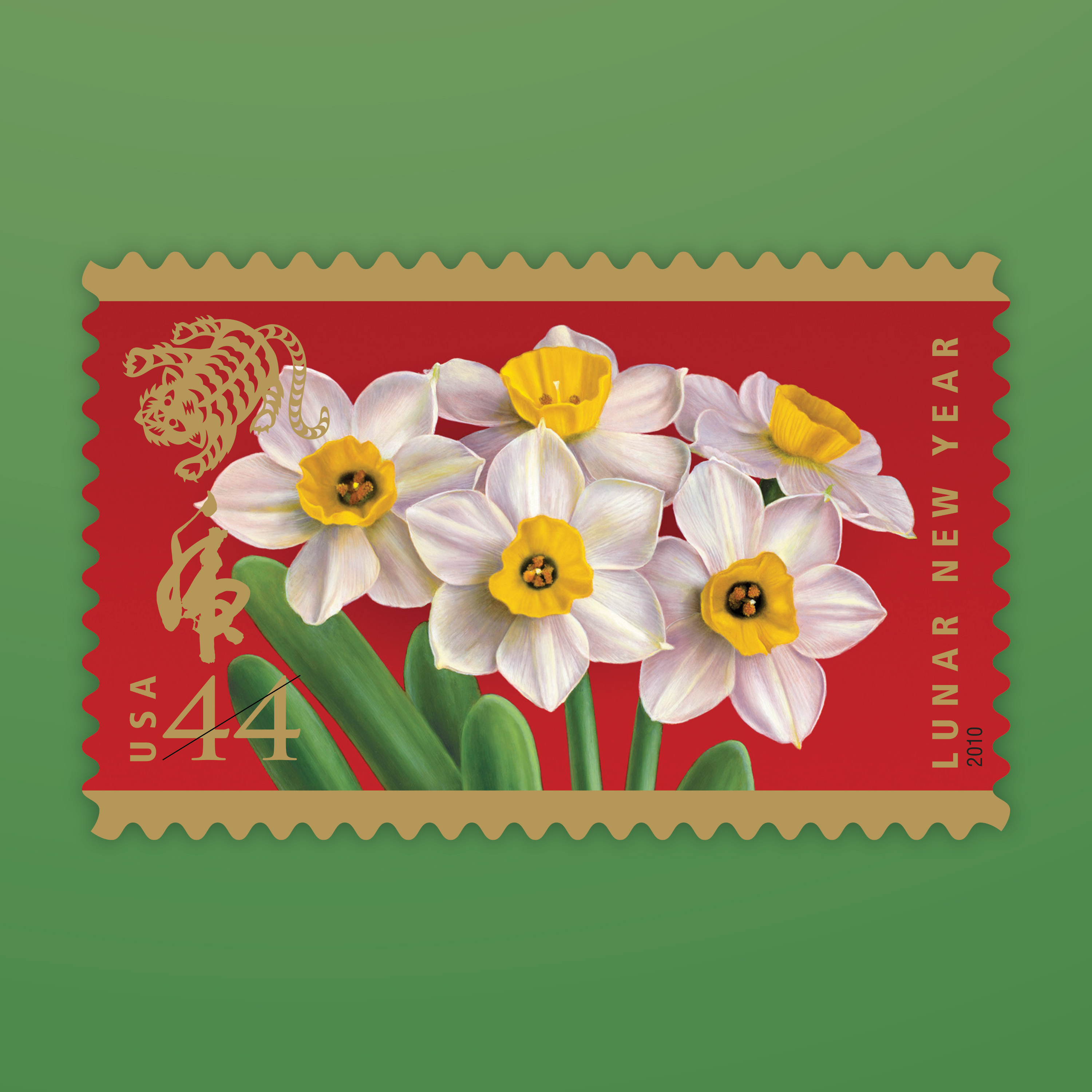
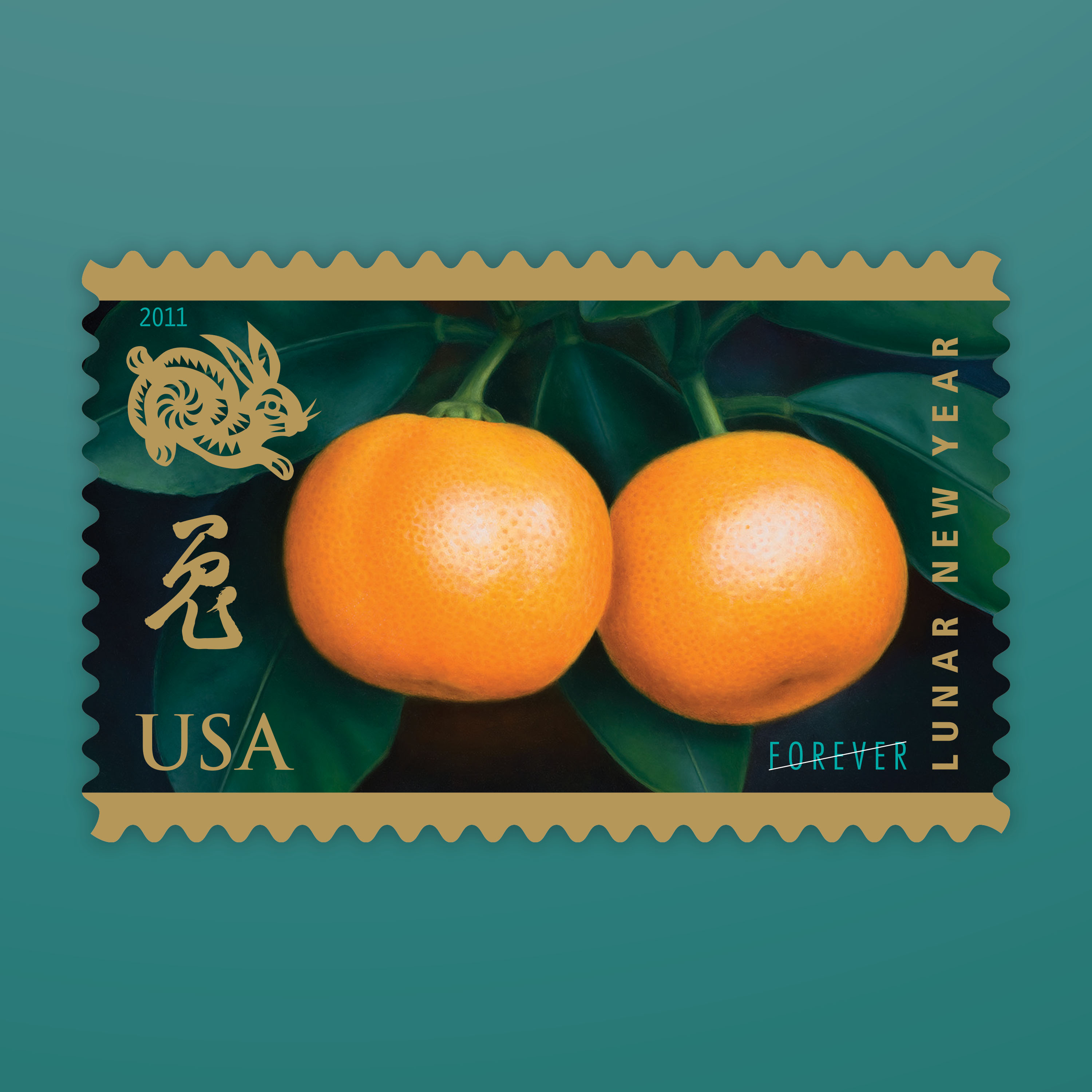
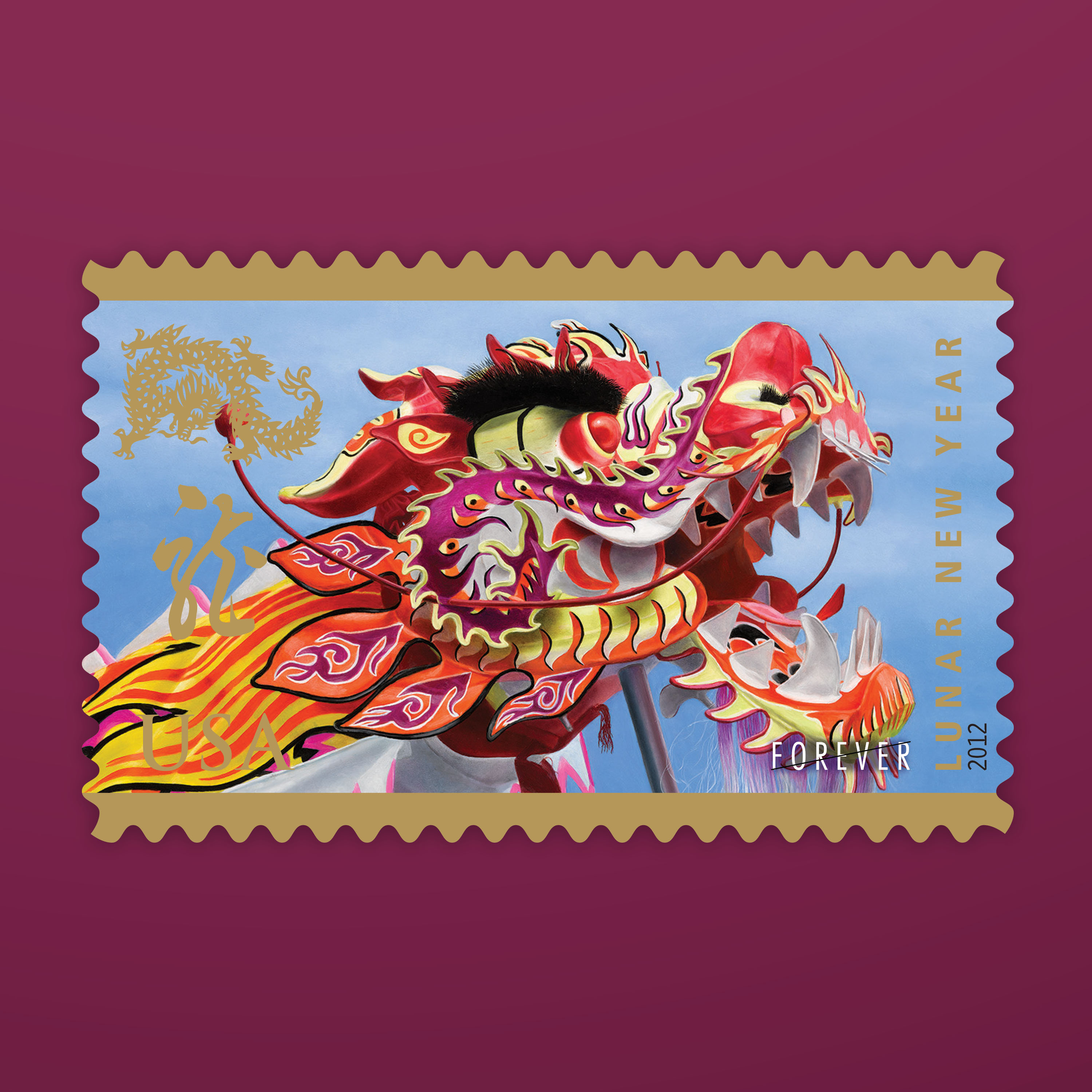
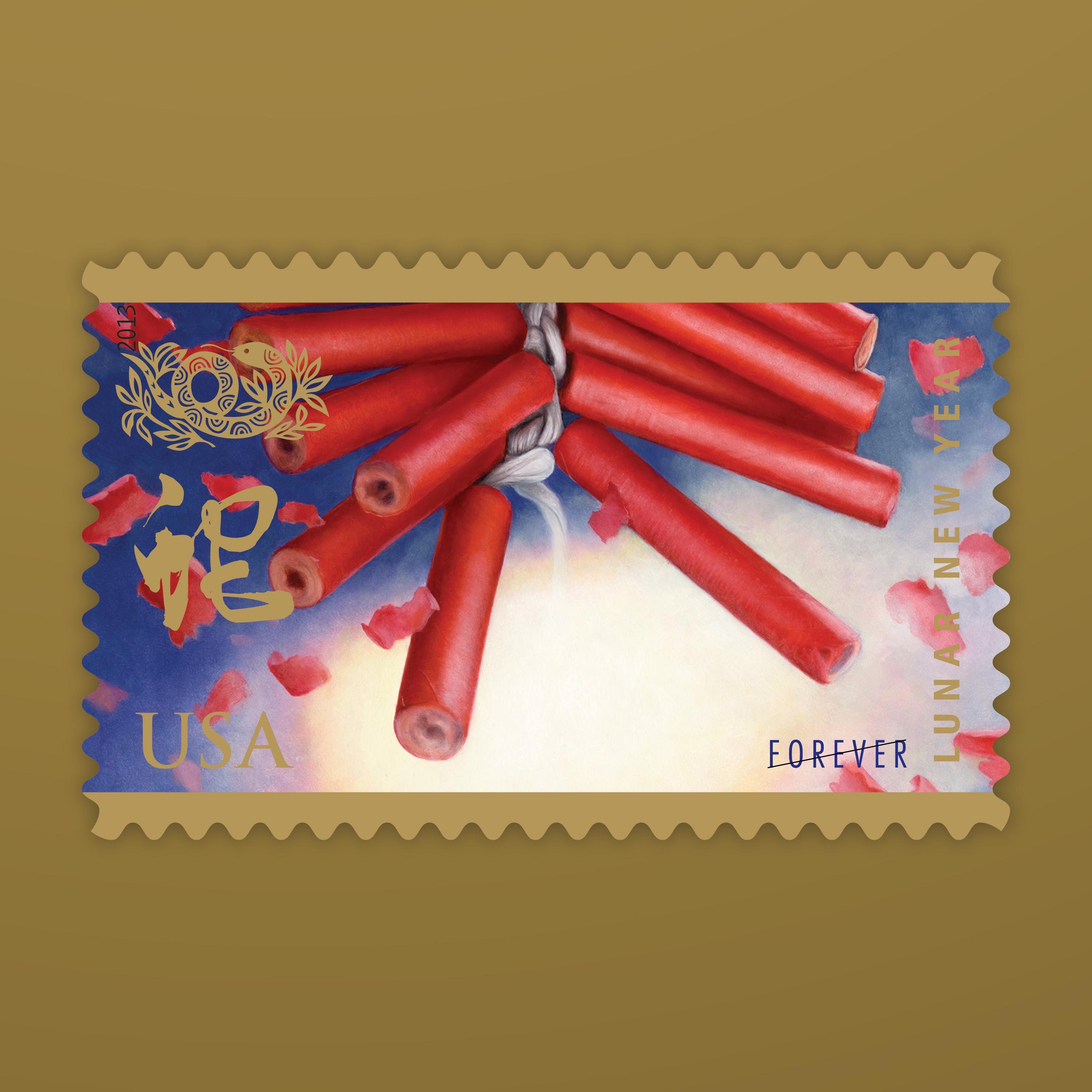
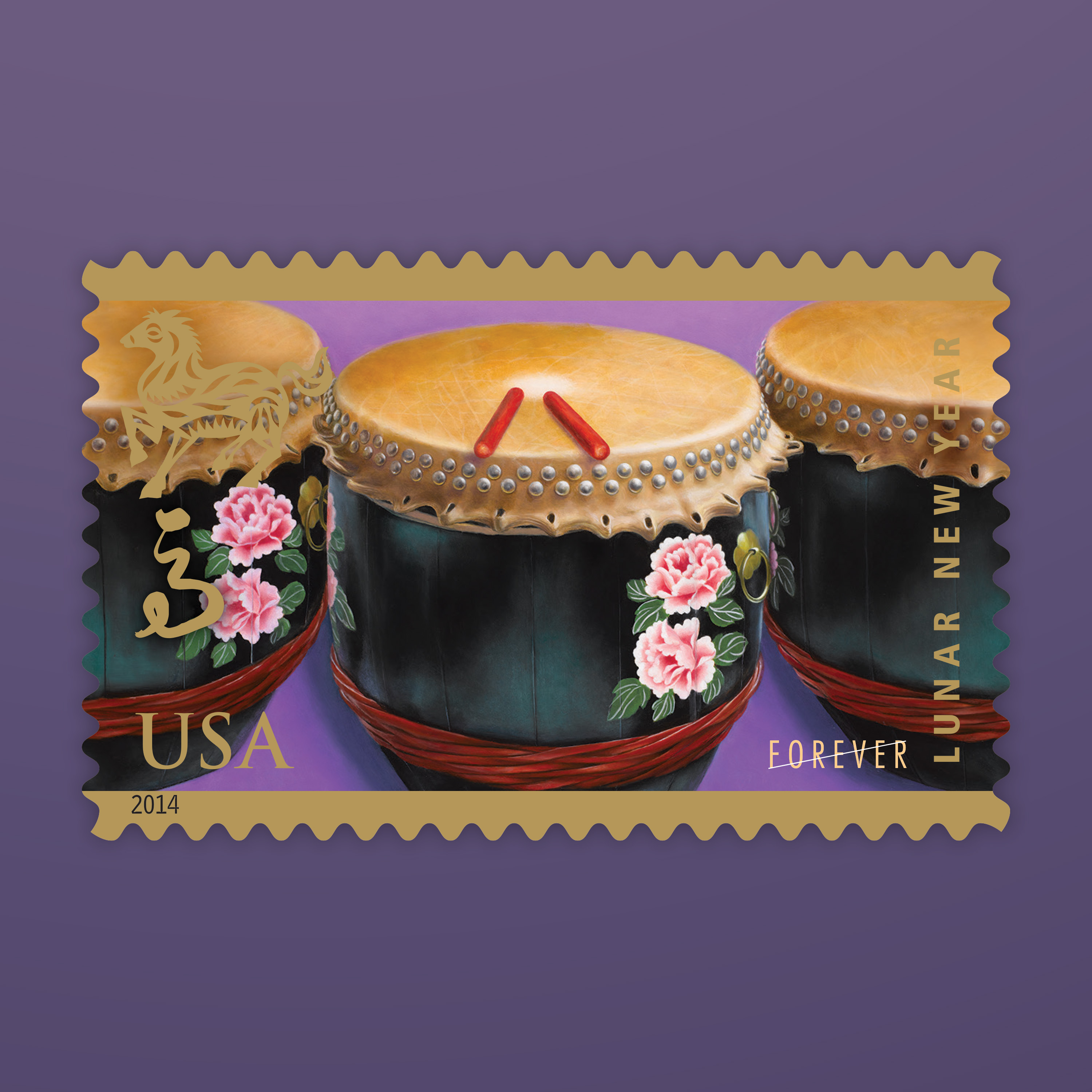
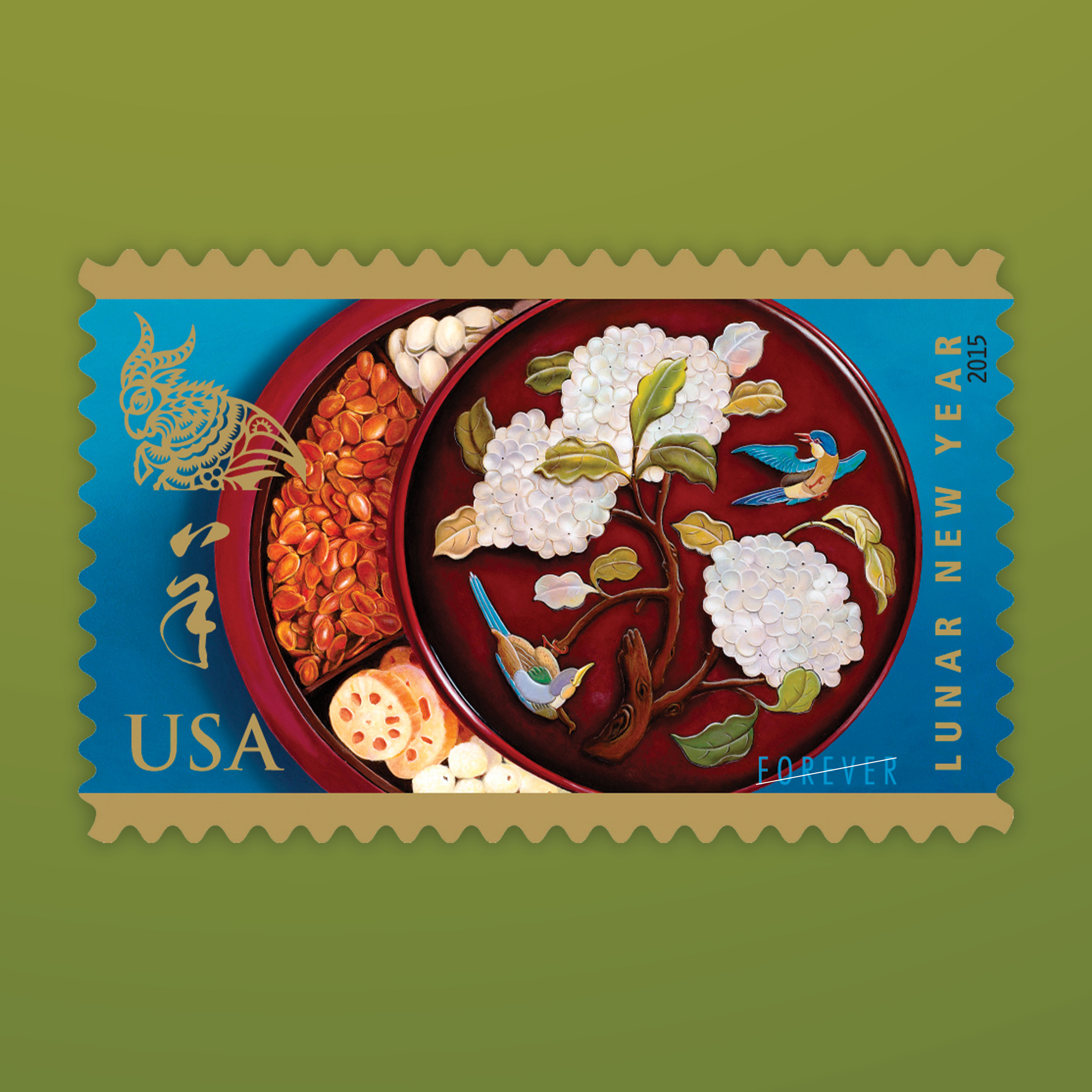


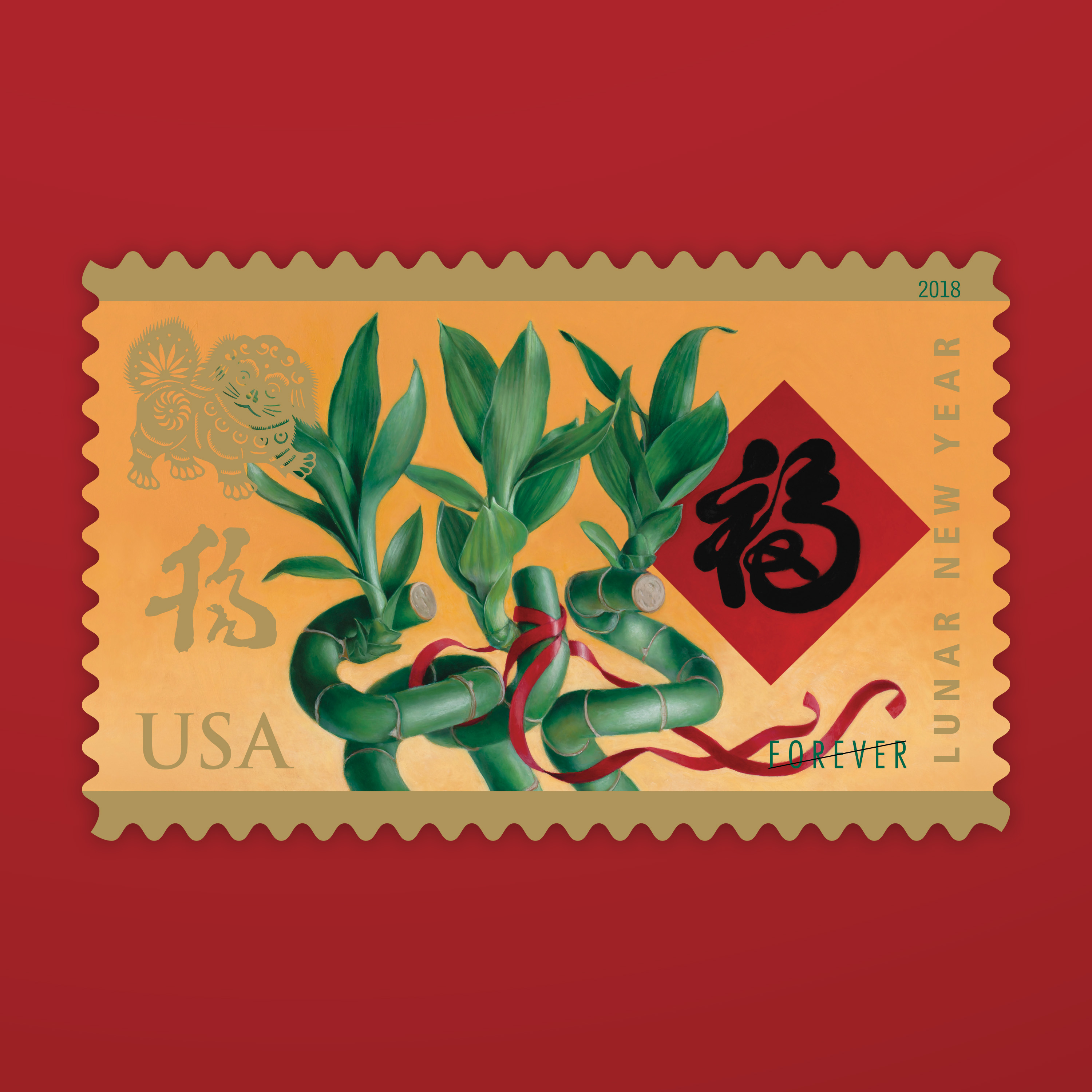
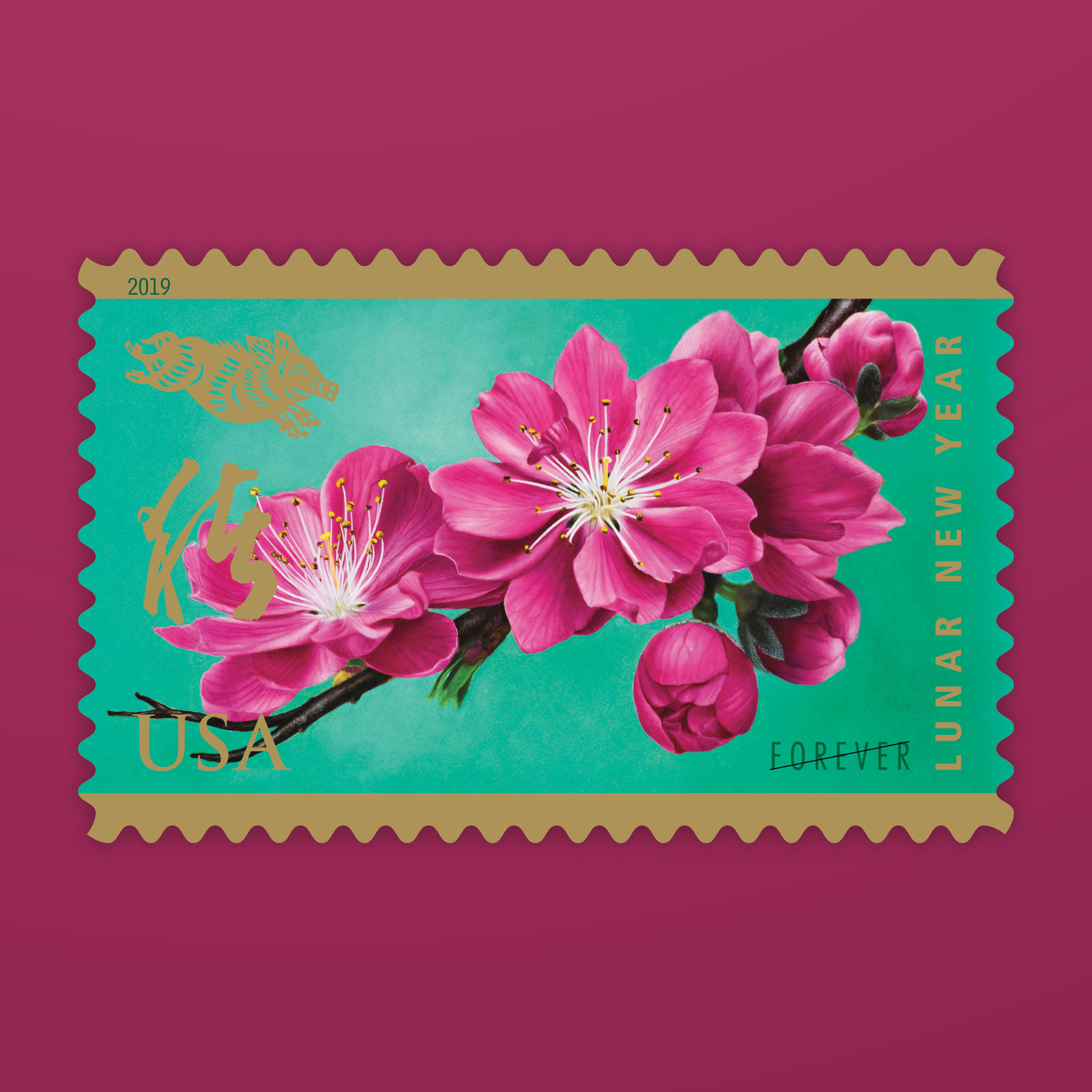
For the third edition of the Lunar New Year series, Alcalá needed to find a new artist whose work was both fresh and timeless. But designing an entire 12-year run was new to him. “This is the first and only assignment I’ve had involving committing to a single artist for a long-term series,” he explains. “At the suggestion of the Citizens’ Stamp Advisory Committee, and particularly the chairperson, I looked for a new angle — one that takes a little bit more of a playful approach to the subject.”
When sourcing art for stamp projects, Alcalá looks in many places. “I always keep my eyes open for emerging artists,” he explains. “Sometimes I find new work on Instagram or other social media. Other times I find them from work published in magazines or newspapers. I also look at annuals from illustration competitions. On occasion, an artist will be recommended to me.”
By combing through print publications, social media, and other sources for emerging artists, Alcalá discovered, and became enamored with, the work of artist Camille Chew. “My daughter saw her work on social media and called my attention to it. In particular, we were attracted by a series she did showing young, empowered women. It wasn’t until I looked further that I discovered her work with masks.”
He immediately had a feeling that Chew’s masks would fit the Lunar New Year subject perfectly. “They were attractive, well-executed, non-traditional yet still representational, and they were three-dimensional. This would be a fresh approach.
He immediately had a feeling that Chew’s masks would fit the Lunar New Year subject perfectly. “They were attractive, well-executed, non-traditional yet still representational, and they were three-dimensional. This would be a fresh approach.”
But a fresh approach still has a shelf life, and 12 years is a long commitment to a particular aesthetic. Alcalá knew that any decision he made would have to rely on the work’s unique qualities over novelty. “Unfortunately, I don’t have a crystal ball so I can’t say for sure what will stay fresh for 12 years. But Chew’s work uses simple elements in a fresh, unexpected way. I think this will help make the series engaging for the entire cycle.”
After contacting Chew to create 12 new 3D masks for the series, the artist and the art director began working in tandem to land on just the right look and feel for the project. “We started on the first mask (Year of the Rat) with pencil sketches. That progressed to a two-dimensional illustration. When that was approved, Chew worked to prepare two-dimensional illustrations showing how she envisioned the whole series working. These were shared with USPS who approved. She then created the first mask.
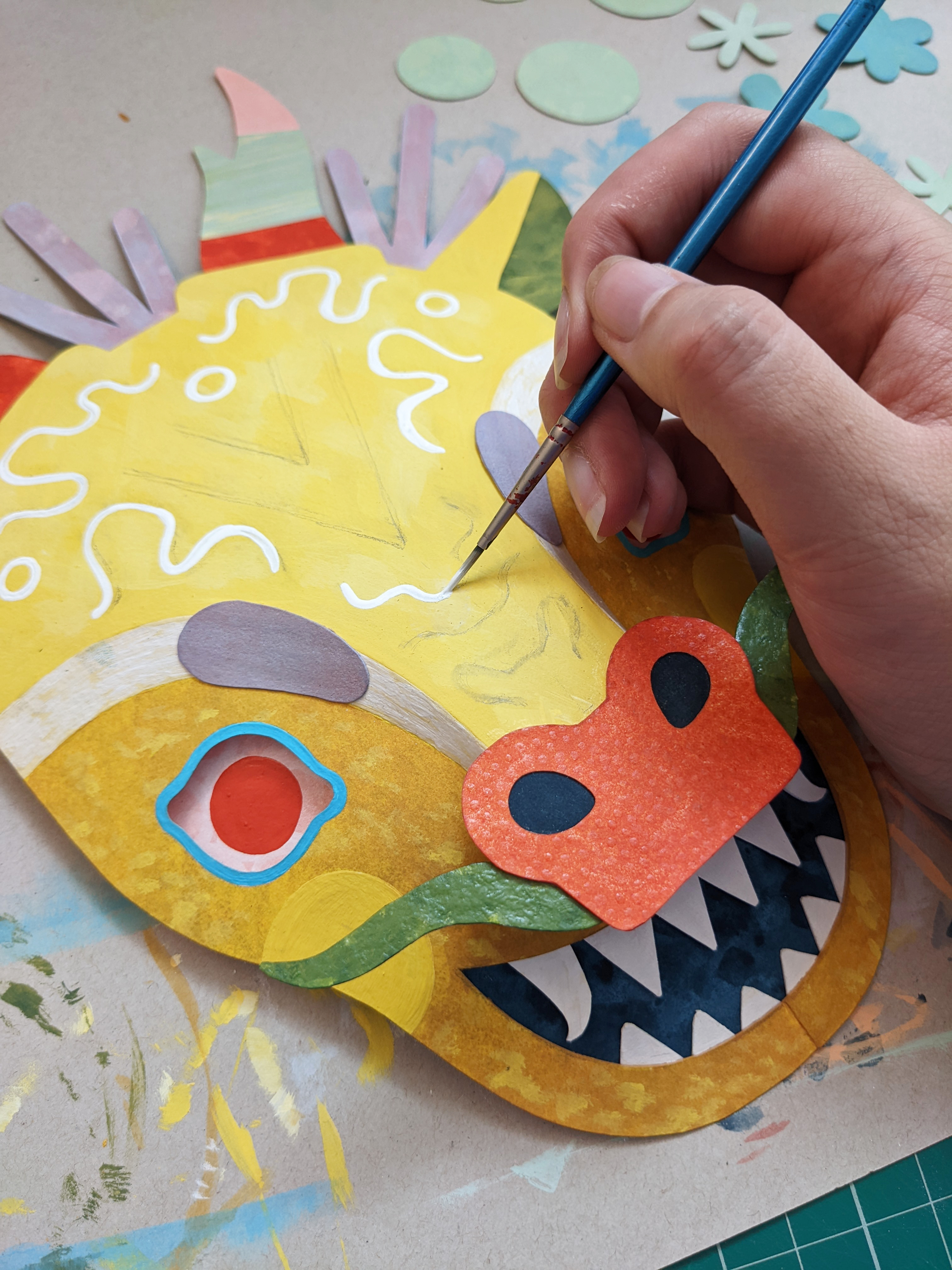
“Since then, she has crafted each mask based on the previously approved preliminary illustration. There haven’t been many adjustments needed. The masks are always beautiful on arrival!”
[Chew] has crafted each mask based on the previously approved preliminary illustration. The masks are always beautiful on arrival!
As far as directing the series goes, Alcalá must present Chew’s art at stamp size in the most engaging manner possible. To accentuate their 3D quality, he has each mask photographed on a stark white background. He also chooses elements for the printing process such as foil to highlight specific aspects of her designs. “I do need to make suggestions about what special elements on each stamp will be foil-stamped, and usually what color foil will be used.”
With the fifth mask in the series being an especially important one — the dragon holding the place of highest regard among the 12 animals of the Chinese zodiac — Alcalá feels no reservations about the direction of the series, even with some nontraditional elements and colors being used. “Few stamp designs are loved by 100 percent of the public. But this new Lunar New Year series has drawn lots of praise and recognition, including at least one person who had the art tattooed on their leg.”
